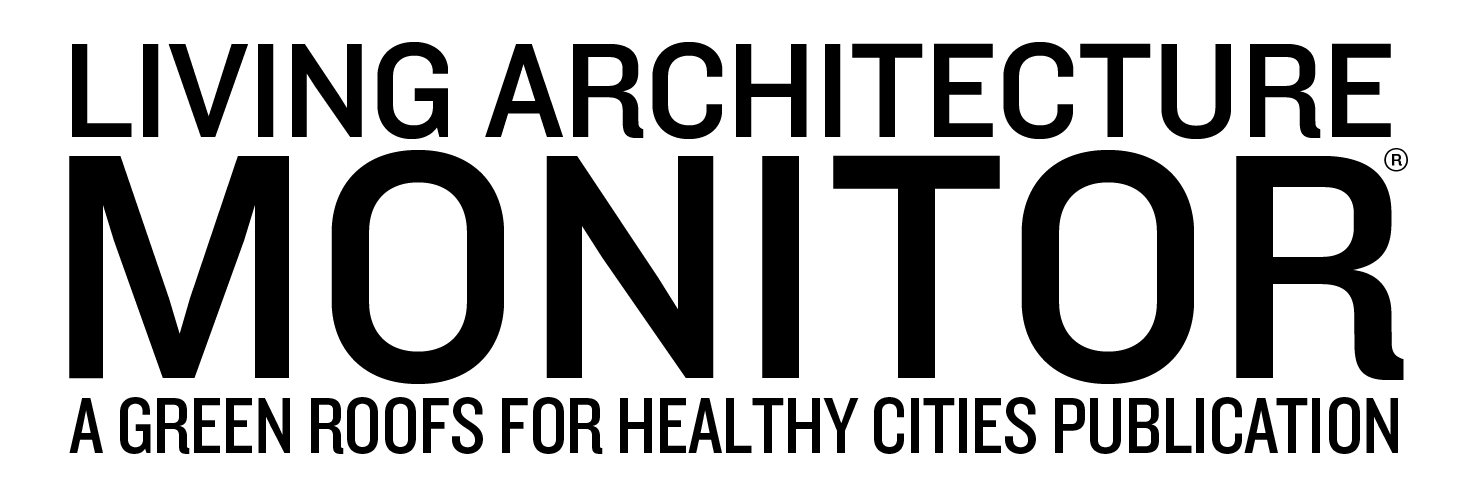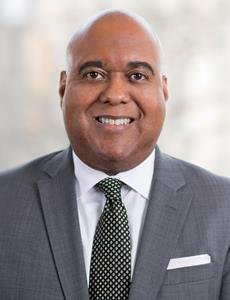On the Roof With… Philadelphia Water Department’s Commissioner and CEO Randy E. Hayman
Advertisement
In 2011 the PWD embarked upon Green City, Clean Waters, a multi-billion-dollar investment in Green Stormwater Infrastructure and traditional infrastructure aimed at reducing pollution from combined sewer overflows that occur during wet weather and improving the health of local waterways. PWD was the first major utility to embrace, with the backing of state and federal officials, widespread green infrastructure development, and the resulting broader environmental, social and economic benefits that result.
PWD’s goal is to reduce the volume of combined sewer overflows by 85% by 2036, with stormwater from over 9,000 acres of impervious surfaces managed using green infrastructure. Commissioner Randy E. Hayman, Esq. took over the reins of PWD in June 2019. Commissioner Hayman received his undergraduate degree from the University of Michigan and a law degree from the Georgetown University Law Center. I caught up with Commissioner Hayman, a keynote speaker at the upcoming CitiesAlive Conference October 16 -19, 2022, for this segment of On The Roof With...
Steven W. Peck (SWP): Green City Clean Waters stands out as a pioneering and award-winning approach to managing stormwater. You are more than 10 years into the plan at this point, how would you say it is going regarding your stormwater management goals? Are you on track, ahead of the game?
Randy Hayman (RH): Since Green City, Clean Waters was officially adopted as Philadelphia’s plan to address the issue of combined sewer overflows in 2011, we have had tremendous success. We recently passed our 10-year milestone with this initiative, and we are exceeding our goals. Coming into the start of 2022, we were officially managing stormwater from nearly 2,200 acres of impervious surfaces using green infrastructure. That all adds up to a more than 3-billion-gallon reduction in the annual combined sewer overflow volume.
Those are big numbers with meaningful impacts on our local waterways, but behind those big numbers are many individual stories of success and growth in our communities, and neighborhoods where investment in green spaces and infrastructure is needed. We have helped to bring new trees to city blocks, new rain gardens to places of worship, new green roofs to hospitals. There are now thousands of new green infrastructure tools spread across Philadelphia.
The revamped American Street corridor in North Philadelphia spans 17 blocks and includes a variety of green stormwater tools with the capacity to divert close to 90 million gallons of stormwater annually from the area’s combined sewer system. Photo: Philadelphia Water Department
Advertisement
SWP: Widespread community buy-in appears to have been instrumental to your successes so far. How and why is this important?
RH: Unlike conventional underground infrastructure, many green infrastructure systems result in permanent surface changes in neighborhoods throughout the city. At the beginning of the program, people were unfamiliar with green stormwater infrastructure (GSI). While it is now more common, we still need to strategically engage and educate communities when GSI is proposed.
Our engagement efforts, like community meetings, can also give residents a role in green projects. We can speak to people directly about the challenges we face in managing stormwater and combined sewer overflows, and how the water bill they pay every month allows us to fund solutions to those challenges with investment back into communities.
SWP: There are many options for implementing green stormwater infrastructure. Where are you seeing your biggest wins in terms of retention and detention and if this is low hanging fruit, so to speak, are you running out of it?
RH: One of our biggest success stories is the growth of green infrastructure we have seen in Philadelphia thanks to our stormwater regulations, which require developers on new and redeveloped projects over a certain size to manage stormwater on-site. In our first 10 years, these regulations helped to create 439 projects that are managing 700 acres of impervious surface.
SWP: It has been really hot all over the continent this summer. I am wondering if in addition to managing stormwater, have you been able to document any additional environmental benefits – like a reduction in the urban heat island for example or reductions in air pollution?
RH: As a water utility, that bigger issue of urban heat islands is something we look toward our partners at the city, state, federal level to really tackle holistically. But we know adding more green spaces to our neighborhoods must be a part of the solution, so there are clearly ways that Green City, Clean Waters will be part of addressing the overall health and sustainability of our city.
SWP: Green Stormwater Infrastructure is effective at managing stormwater, but it also provides a number of social community building benefits, such as job creation and improving social equity? Have you initiated any programming specific to these social benefits of green infrastructure? Please tell us about it.
Advertisement
A closer look at the plants on the green roof and garden plaza at the Children’s Hospital of Philadelphia Buerger Center. Photo: Philadelphia Water Department
RH: One great example of how a plan like Green City, Clean Waters can provide opportunities for social benefits and green jobs would be our partnership with PowerCorpsPHL. PowerCorpsPHL engages disconnected young adults and returning citizens in Philadelphia and, through paid work experience, helps them connect with career paths that can be life changing.
In our work with PowerCorpsPHL, we train Philadelphians in the important work of maintaining green infrastructure managed by the Water Department. That can lead to jobs with the City and with contractors and firms that maintain these systems. This opportunity is one of the things that makes green infrastructure a tool we can use to benefit the people we serve in new ways.
SWP: Are there any projects which stand out for you as exemplifying the many benefits of green stormwater infrastructure? An amazing green roof perhaps?
RH: The recently completed American Street project, which involved federal funding and partnerships across city government is a great example of how green infrastructure can be part of a larger solution to improving our urban environment in ways that make it better for residents while also meeting our goals of improving water quality in the rivers.
One of the more rewarding green roof projects in recent years was done as a result of our stormwater regulations when the Children’s Hospital of Philadelphia created a new facility in West Philadelphia called the Buerger Center.
They built a lush, beautiful 16,000-square-foot roof garden and a ground-level plaza garden covering more than two acres. These spaces not only serve the hospital’s mission of reducing stress for kids in treatment—they also reduce pollution in Philadelphia's waterways.
SWP: No other city in North America has developed and implemented a comprehensive stormwater management plan like you. Are there any high-level lessons learned you might share with other utilities that can help them with green stormwater infrastructure?
RH: Partnerships, partnerships, partnerships. Over the past decade, a monumental force in the success of Green City, Clean Waters has been ongoing support from external entities. Whether city agencies or community organizations, companies or non-profits, operations large and small have helped shape the last decade of our 25-year plan.
A green roof and garden plaza at the Children’s Hospital of Philadelphia Buerger Center in West Philadelphia manage stormwater and provide relaxing green space for patients and their families. Photo: Philadelphia Water Department
Without the hearts and minds of people and organizations across Philadelphia, we would not be here today. And any city or utility hoping to implement a plan like this will need the support of their community and leadership across the board.
SWP: What would you say are the main challenges you are facing in terms of implementing Green City Clean Waters, now that you are almost at the halfway mark of your 25 year plan?
RH: Finding the space and right arrangements to build green infrastructure is certainly a challenge, but a whole other challenge is setting up the mechanisms and incentives to maintain these systems. For green infrastructure to properly do the work of protecting our waterways, it needs to be maintained, and you need trained workers to do that.
There are many upsides to solving that, including a stable green jobs workforce, but developing and funding a long-term maintenance approach is a challenge all cities taking on large-scale green infrastructure plans will have to address.
SWP: Thank you very much Mr. Hayman. We are very appreciative of this, and of your continued leadership in the utilization of green stormwater infrastructure in Philadelphia. We look forward to hearing more about your incredible journey in Philadelphia on October 16 at CitiesAlive.
Advertisement
Randy Hayman, Esq. Commissioner and CEO of the Philadelphia Water Department (PWD) started as commissioner for the PWD in 2019, served as the general counsel for 15 years at the District of Columbia Water and Sewer Authority and the Metropolitan St. Louis Sewer District, before arriving in Philadelphia. He was also a partner at the environmental law firm, Beveridge and Diamond, in D.C.
Additional Resources:
@PhillyH2O on social
https://water.phila.gov/green-city/
https://water.phila.gov/drops/gccw10/
https://vimeo.com/phillywatersheds
https://www.flickr.com/photos/philadelphiawater/albums








